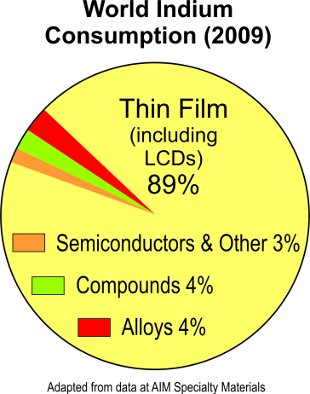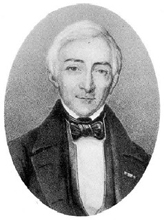One day in 1863, a German geochemist named Ferdinand Reich noticed an odd substance while testing zinc ores in his laboratory. Being colour-blind, he asked his assistant, Hieronymous Richter, to test it using a spectroscope. Under examination, the substance released an indigo blue spectral line, leading them to call the unknown element indium.
Indium (In) is a silvery grey, high-luster metal with a very low melting point. Pure indium almost never exists in nature. Instead, the element occurs as 'stray ions' trapped within the crystals of base-metal minerals. Typically, it is found in sphalerite (a zinc ore), as well as in ores of copper, tin and lead. Today, most of the world's commercial indium is a byproduct of zinc mining.
Main Uses. Indium is an essential component in liquid crystal displays (LCDs). Indium–tin oxide forms the transparent, electrically conductive coating on LCDs in flat-panel TVs, computers, cell phones, digital cameras and more. The metal's conductivity and low melting point make it an important ingredient in electrical components, solders and alloys. It is also used to plate metal bearings and other moving parts.
Many thin-film solar cells already use the compound CIGS (copper–indium–gallium–selenide) as a semiconductor. Next-generation technology has created an innovative, embedded CIGS 'ink' for solar devices to lower their production costs and boost their energy efficiency.

Outlook. The LCD sector is the largest consumer of indium worldwide (about 50%). Due mainly to the surge in LCD demand and also to evolving solar cell technologies, indium prices (in $US/kg) rose from $94 in 2002 to $640 in April 2010, having surpassed $1,000 in 2006.
The following links give further information on indium uses, production, technological advances and market data.
Commodity Summary (2010): Indium by United States Geological Survey.
Minerals Information (2010): Indium by United States Geological Survey.
2007 Canadian Minerals Yearbook: Indium by Natural Resources Canada.
Indium. 2005. By J.D. Jorgenson and M.W. George. USGS mineral commodity profile, Open File Report 2004-1300, 20 p.

